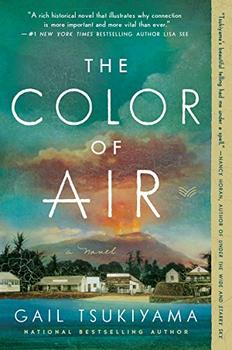Summary | Excerpt | Reading Guide | Reviews | Beyond the book | Read-Alikes | Genres & Themes | Author Bio

From the bestselling author of Moloka'i comes the irresistible story of a young immigrant bride in a ramshackle town that becomes a great modern city.
Honolulu is the richly imagined story of Jin, a young “picture bride” who leaves her native Korea—where girls are so little valued that she is known as Regret—and journeys to Hawaii in 1914 in search of a better life.
Instead of the prosperous young husband and the chance at an education she has been promised, Jin is quickly married off to a poor, embittered laborer who takes his disappointments out on his new wife, forcing her to make her own way in a strange land.
Struggling to build a business with the help of her fellow picture brides, Jin finds both opportunity and prejudice, but ultimately transforms herself from a naive young girl into a resourceful woman. Prospering along with her adopted city, which is fast growing from a small territorial capital to the great multicultural city it is today, Jin can never forget the people she left behind in Korea, and returns one last time to make her peace with her former life.
With its passionate knowledge of people and places in Hawaii far off the tourist track, Honolulu is a spellbinding story of the triumphs and sacrifices of the human spirit that is sure to become another reading group favorite.
Read Alan Brennert's blog entry about Honolulu at BookBrowse.
Honolulu is everything good historical fiction should be. It entertains and educates, while immersing the reader in the time and place conveyed, and it's sure to find its way into many readers' hearts...continued
Full Review
(604 words)
This review is available to non-members for a limited time. For full access,
become a member today.
(Reviewed by Kim Kovacs).
Korea became the object of Japan's colonial ambitions in the late nineteenth century, culminating in Japan's annexation of the region in 1910. Koreans, escaping the abuse and heavy taxation imposed by the Japanese, began immigrating to Hawaii. Approximately 6000 migrated to the islands between 1906 and 1910, 90% of whom were male. Most ended up as laborers on sugarcane plantations. The Japanese government prohibited emigration to Hawaii starting in 1910, but provided an exception for relatives of those already living in Hawaii.
A shortage of marriageable women, combined with the loophole in Japan's immigration laws, allowed for the rise of the "picture bride." A Korean man in Hawaii would provide a photograph of himself to a ...
This "beyond the book" feature is available to non-members for a limited time. Join today for full access.

If you liked Honolulu, try these:

by Gail Tsukiyama
Published 2021
From the New York Times bestselling author of Women of the Silk and The Samurai's Garden comes a gorgeous and evocative historical novel about a Japanese-American family set against the backdrop of Hawai'i's sugar plantations.

by Mary Beth Keane
Published 2014
A bold, mesmerizing novel about the woman known as "Typhoid Mary," the first known healthy carrier of typhoid fever in the burgeoning metropolis of early twentieth century New York.
There are two kinds of people in the world: those who divide the world into two kinds of people, and those who don'...
Click Here to find out who said this, as well as discovering other famous literary quotes!